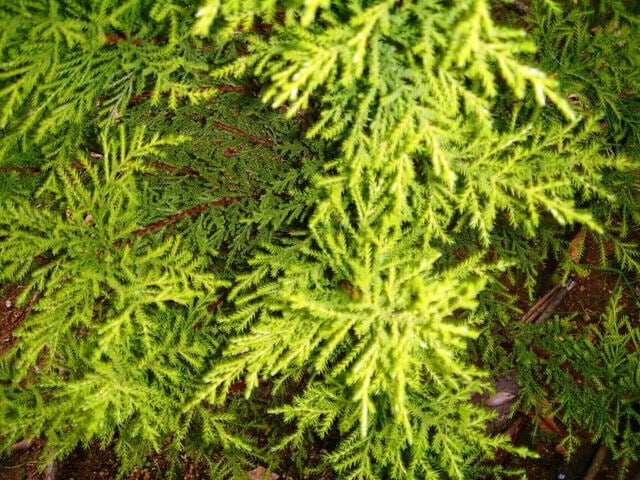
Unveiling the Magic of Macrocarpa: A Comprehensive Guide to Planting
In the realm of landscaping and forestry, few species command the attention and admiration that Macrocarpa does. Its elegant appearance, robust nature, and versatile applications make it a favorite among arborists, gardeners, and environmental enthusiasts. In this comprehensive guide, we will delve into the world of Macrocarpa, exploring its unique attributes, optimal planting techniques, and the countless benefits it brings to your outdoor spaces.
Table of Contents
- Introduction to Macrocarpa
- Discovering the Beauty of Cupressus Macrocarpa
- Understanding Macrocarpa
- Taxonomy and Species Characteristics
- The Advantages of Planting Macrocarpa
- Why Choose Macrocarpa for Your Landscape
- Selecting the Right Location
- Creating the Perfect Environment for Growth
- Preparing the Soil
- Soil Amendments for Thriving Macrocarpa
- Sourcing Quality Macrocarpa Saplings
- Where and How to Find Healthy Trees
- Planting Macrocarpa: Step-by-Step Guide
- From Digging the Hole to Mulching
- Caring for Your Macrocarpa
- Watering, Pruning, and Disease Management
- Macrocarpa in Landscaping
- Creative Uses and Design Ideas
- Eco-Friendly Benefits
- How Macrocarpa Benefits the Environment
- Frequently Asked Questions
- Common Queries about Macrocarpa
- Conclusion
- Wrapping Up the Macrocarpa Journey
- FAQs
Introduction to Macrocarpa
Discovering the Beauty of Cupressus Macrocarpa
Macrocarpa, scientifically known as Cupressus Macrocarpa, is a magnificent evergreen tree renowned for its majestic appearance and numerous applications. Native to the Monterey Peninsula in California, it has found its way into landscapes and gardens worldwide, gracing them with its charm. Its common names include Monterey cypress, Macrocarpa, and even the “pepper tree” due to the aromatic scent of its foliage.
Understanding Macrocarpa
Taxonomy and Species Characteristics
Cupressus Macrocarpa belongs to the family Cupressaceae. It stands tall with a pyramid-like shape and a height ranging from 40 to 70 feet when mature. The bark is reddish-brown, and the leaves, resembling scales, emit a delightful fragrance when crushed. Its distinctive cones, which start as green and age to brown, add an aesthetic appeal to its overall appearance.
The Advantages of Planting Macrocarpa
Why Choose Macrocarpa for Your Landscape
Planting Macrocarpa offers a plethora of benefits. Its rapid growth, coupled with its resistance to pests and diseases, makes it a low-maintenance choice. Additionally, its dense foliage provides excellent privacy screening, and its drought tolerance makes it adaptable to various climates.
Selecting the Right Location
Creating the Perfect Environment for Growth
Before planting Macrocarpa, it’s crucial to choose the right location. This tree thrives in full sun but can tolerate some shade. Well-drained soil is essential to prevent root rot, and it’s advisable to avoid areas prone to waterlogging.
Preparing the Soil
Soil Amendments for Thriving Macrocarpa
Macrocarpa prefers slightly acidic to neutral soil. Conduct a soil test to determine its pH, and if necessary, amend it with organic matter to enhance fertility. Good soil preparation sets the stage for a healthy tree.
Sourcing Quality Macrocarpa Saplings
Where and How to Find Healthy Trees
When purchasing Macrocarpa saplings, select specimens with vibrant green foliage and inspect them for signs of pests or disease. Buying from reputable nurseries ensures the quality of your tree.
Planting Macrocarpa: Step-by-Step Guide
From Digging the Hole to Mulching
Planting Macrocarpa involves several steps, including digging an appropriately sized hole, positioning the tree, backfilling with soil, and mulching to retain moisture and deter weeds. This section provides a detailed guide.
Caring for Your Macrocarpa
Watering, Pruning, and Disease Management
Maintaining your Macrocarpa tree involves proper watering to establish root systems and regular pruning to shape it and remove dead or diseased branches. Learn how to keep your tree healthy and vibrant.
Macrocarpa in Landscaping
Creative Uses and Design Ideas
Macrocarpa’s unique form and resilience make it a versatile choice for landscaping. From hedges and windbreaks to topiaries and standalone specimens, explore creative ways to incorporate Macrocarpa into your outdoor spaces.
Eco-Friendly Benefits
How Macrocarpa Benefits the Environment
Aside from its aesthetic appeal, Macrocarpa contributes to a healthier environment. It acts as a carbon sink, absorbing CO2, and provides habitat for wildlife. Discover how your tree positively impacts the planet.
Frequently Asked Questions
Common Queries about Macrocarpa
- How fast does Macrocarpa grow?
- Macrocarpa can grow at a rate of 2 to 3 feet per year under optimal conditions.
- Is Macrocarpa susceptible to any diseases?
- While generally disease-resistant, it can occasionally face issues like canker and root rot.
- Can I plant Macrocarpa in a small garden?
- Yes, Macrocarpa’s adaptability to pruning makes it suitable for smaller spaces.
- When is the best time to prune Macrocarpa?
- Late winter to early spring is the ideal time for pruning Macrocarpa.
- Does Macrocarpa have any cultural significance?
- Yes, it holds cultural significance for some indigenous communities in California.
Conclusion
In conclusion, planting Macrocarpa can be a rewarding endeavor for any outdoor enthusiast. Its beauty, versatility, and environmental benefits make it a remarkable addition to landscapes. By following the guidelines provided in this comprehensive guide, you can ensure that your Macrocarpa tree thrives and continues to enchant for generations to come.
FAQs
- Where can I buy Macrocarpa saplings?
- You can purchase Macrocarpa saplings at reputable nurseries or through online gardening stores.
- What is the average lifespan of a Macrocarpa tree?
- A healthy Macrocarpa tree can live for several decades, often exceeding 100 years.
- Is Macrocarpa suitable for coastal areas?
- Yes, it is well-suited for coastal environments due to its salt tolerance.
- Can Macrocarpa be used for timber production?
- Yes, Macrocarpa wood is highly valued for its durability and is used in various woodworking applications.
- Are there any companion plants that pair well with Macrocarpa in landscaping?- Yes, plants like lavender and rosemary complement Macrocarpa beautifully, enhancing the overall aesthetics of your garden.